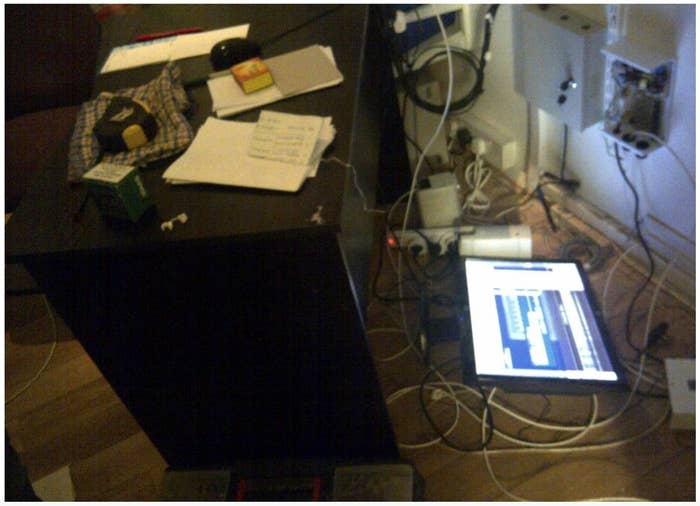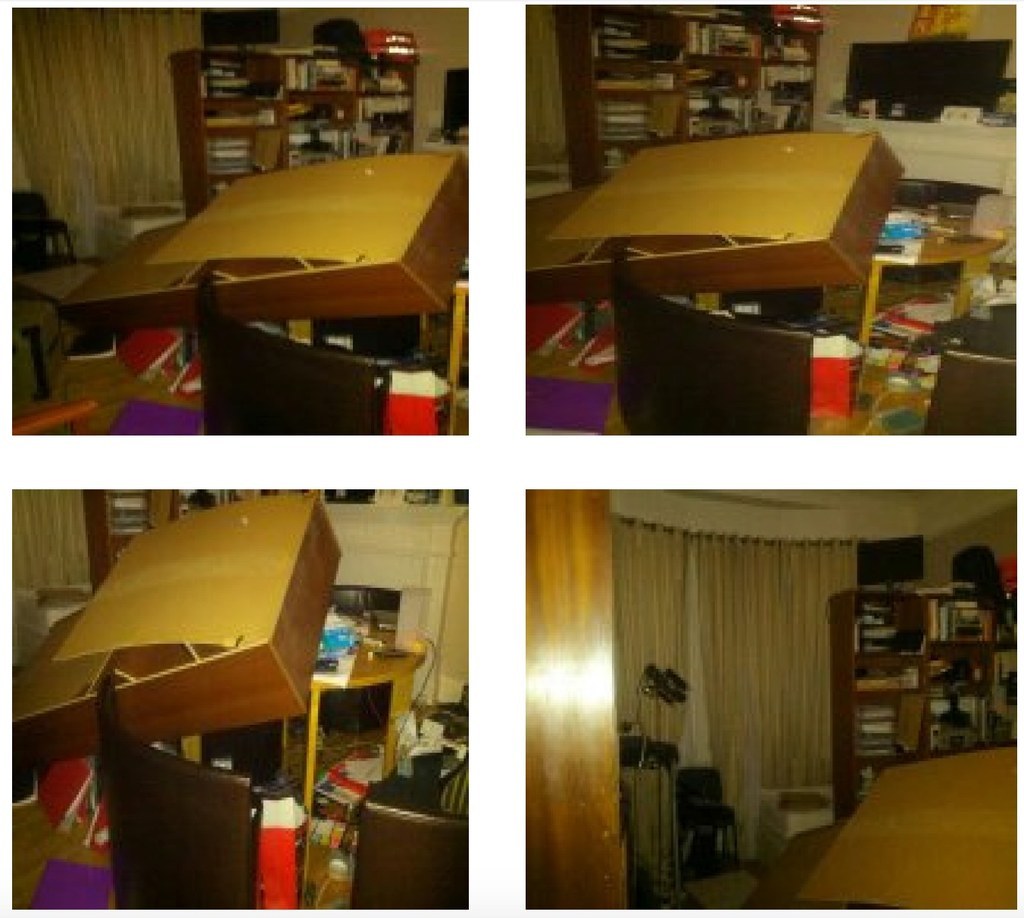Staff and security guards at the Ecuadorian embassy are keeping minute-by-minute records and filing daily official reports on the activities of their long-term guest Julian Assange. The documents, marked "secret", reveal the occasionally fraught relationship between the WikiLeaks chief and his hosts, laying out details of clashes with embassy staff, concerns over Assange's psychological health, and potential escape plans.
The details are contained in a series of internal documents of the Ecuadorian government seen by BuzzFeed News and initially reported on by the journalist Fernando Villavicencio.
BuzzFeed News has independently corroborated several details from within the documents and has asked Ecuador and Assange for comments on the apparent leak. Neither WikiLeaks nor Ecuador's UK embassy responded to requests for comment on the material.
Assange has been apparently unable to leave the embassy, a small flat in Kensington, since seeking asylum there in June 2012. The WikiLeaks editor-in-chief faced extradition to Sweden for questioning over allegations of rape and sexual assault, although he cited potential U.S. prosecution over the publication of leaked documents from Chelsea Manning as his reason for flight.
The documents seen by BuzzFeed News detail two particular flare-ups in the embassy's tight confines. The first took place in September 2012, just three months after Assange first took up residency.
A security guard was on duty at around 8:30pm on 6 September, when Assange was in the embassy with two associates. Around this time, the guard discovered that Assange had made his way into the embassy's secure control room – a room strictly off-limits to him – and started tampering with the security equipment. This led to a scuffle between Assange and the guard that caused damage to the embassy's equipment.

The report then details conflicting accounts of what happened. According to the security guard's account, Assange was asked to stop messing with the embassy's systems and to leave the secure room, which he initially refused to do.
The guard alleges that Assange then punched over a computer monitor before grabbing him by the shirt. This led, according to the guard, to an altercation for a number of minutes that spilled out into the corridor.
Assange's account lays the blame on the security guard, who he claimed had accosted him.
A filmmaker who was present for the incident, the report notes, told embassy staff he did not see the beginning of the scuffle, but that Assange was "out of control" and very upset, and clearly wanted to be verbally offensive and to provoke a reaction.
Embassy staff, including the ambassador and two security officials described only as "Mr White" and "Mr Blue", had a meeting to discuss the incident the following day. In sections of the report marked as analysis and recommendations, the author notes that Assange — described as "Mr Guest" — knows "what the limits of his movements are inside the embassy".
The section continues by noting that "we cannot allow these incidents to be repeated, nor any further attacks against personnel who work for the embassy". The report acknowledges the stress Assange was under, due to both his confinement and the presence of "more than 20 British agents posted outside the building", and recommends further psychological support.
However, just a few months later a separate report notes a similar incident of seemingly erratic behaviour from the WikiLeaks chief shortly before dawn on 4 January 2013.
The report painstakingly notes Assange's movements from minute to minute – further evidence of how closely the Ecuadorians monitored "Mr Guest" – reporting that he seemed to wake at 6:05 that morning. Then, just five minutes later, the security guard heard a loud crash from Assange's room.
Assange came to the door, assuring the on-duty guard that everything was fine, but (according to the guard's account) seeming to try to block his view of the room's interior. A few minutes later, Assange left the room carrying his laptop into a nearby room designated as his bathroom, where he remained for a period of hours.
During this time, the memo continues, the guard was able to see inside Assange's bedroom, where a large, smashed bookshelf was strewn across the room. The guard took photographs of the room's condition.

The room visible in the photos from the secret Ecuadorian report clearly matches the one in an August 2013 video released by Assange as part of his bid to run for the Australian senate (Assange's embassy room is visible in the video between 3:42 and 4:16).
Assange later told embassy staff that the bookshelf had fallen over of its own accord, according to the same memo, but this seemingly did little to assuage their concerns about the wellbeing of Assange or those around him. As before, the incident was passed up the embassy's chain of command – reference is made to a daily report on his activities – including, once again, "Mr White" and "Mr Blue".
The report notes with concern a regular comment in "internal daily reports" on Assange recording his tendency to "shout and talk incoherently" at night, attributed to night terrors.
It then goes on to note: "This episode is nothing more than the result of the stress that Mr Assange could be feeling as a result of his isolation.
"If it's clear that his situation could result in psychological harm because of the circumstances in which he finds himself, it's equally clear that there is no protocol that might help avoid or minimise this."
The report continues in quite a critical manner as to Assange's intrinsic "nature", independent of his stressful situation, stating that his "evident anger" and "feelings of superiority" could cause stress to those around him — "especially the personnel who work in the embassy, mainly women".
It adds that the stress on those personnel also stems from media pressure, police, and "most worryingly, the hard core of people who are either for or against Mr Assange's cause", risking the embassy's capacity to function as usual.
The report contains multiple recommendations to improve the situation, including a proposal from "Mr Blue" for regular assessments of Assange's physical and mental health, regular meetings with Assange's confidantes to assess his demeanour and state of mind, and efforts to prevent Assange becoming isolated.
The report also notes a need to "control access to alcohol".
Other documents set out the external security challenges faced by the Ecuadorians through the activities of the Metropolitan police, who at one point had up to 50 officers in and around the building containing the embassy.
A 2012 presentation shows handwritten instructions to officers at the scene – embarrassingly caught by a photographer's long lens and made public – instructing them on what to do if Assange emerged from the embassy.


"Action required – Assange to be arrested under all circumstances," it states. "He comes out with dip[lomatic] immunity, as dip bag, in dip bag (risk to life) in dip vehicle. ARRESTED."
Asked whether the Metropolitan police would violate diplomatic immunity to arrest Assange, a Met spokesperson said: "Our objective is to arrest Julian Assange for breach of bail. Under no circumstances would an arrest be made in breach of diplomatic immunity."
The Ecuadorian embassy did not respond to requests for comment or clarification on any aspect of the documents seen by BuzzFeed News, although the spokesperson for Scotland Yard said the embassy had been in contact with them about the enquiry. WikiLeaks did not respond to a request for comment.
In the Ecuadorian slides, the police orders are translated into Spanish and given a short analysis before a later slide sets out a series of options of ways to get Assange out of the UK.

The first option considered was to obtain diplomatic immunity for Assange by making him Ecuador's representative to the UN. While there was a risk that the UN General Assembly could revoke this status, the report notes that this would take some time, which could be exploited to get Assange on to Ecuadorian territory.
A second consideration was to attempt to smuggle Assange out in an inviolable diplomatic car. However, the officials concluded that this would probably be impossible as Scotland Yard had even placed officers inside the embassy building, which was shared with other tenants.
"Police are located in the hall, on the stairs, and the exits of the lifts," it states. "The British police can be found in all the routes that would allow Assange to take a diplomatic car."
Elsewhere the document notes that officers had come still closer: "Last night (28/08/2012), security at the Ecuadorian embassy had to remove a policeman who entered without permission, in the department above the embassy."
A spokesperson for the Metropolitan police declined to respond to a query on the incident.
Another option for exfiltrating Assange considered by embassy staff was to put him in a diplomatic bag, considered inviolable by treaty, but only if they solely contain documents relating to the normal practice of an embassy.
Officials dismissed this plan as they knew police outside the embassy had "advanced technology that can detect body heat". Elsewhere, embassy staff had noted a police van across the road from the embassy was "bombarding" the building with microwaves, and was capable in the view of staff of collecting most if not all signals from within.


The final plan contemplated on the slide was that of a "discreet exit".
"Assange could leave in fancy dress," the document suggests, "or try to escape across the rooftops towards a nearby helipad, or get lost among the people in Harrods."
In the event, it seems none of the plans were followed through. Three years later, Assange remains in the embassy.
Fernando Villavicencio, who initially reported on Assange's embassy stay in Spanish for Ecuador Focus, has recently submitted allegations of persecution against him by Ecuador's government to the UN.
• A number of documents relating to Julian Assange's stay at Ecuador's London embassy, as well as wider surveillance activities of the Ecuadorean government, have been posted here by the WikiLeaks Forum, an unaffiliated forum discussing WikiLeaks and Assange.
Disclosure: James Ball, one of the authors of this article, worked for WikiLeaks for a short period between late 2010 and early 2011.


